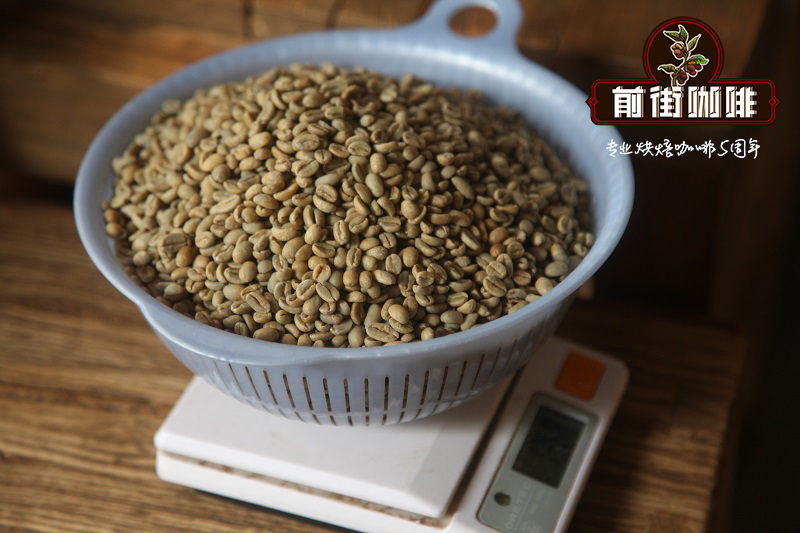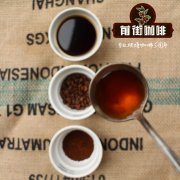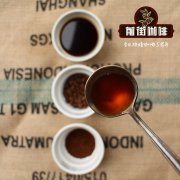The Road of Coffee Development in Colombia how Colombia has changed from drug production to boutique coffee

Colombia is rich in coffee production and has always been the second largest coffee producer only after Brazil. However, from 2003 to 2007, it was overtaken by Vietnam and is now the third largest coffee producer in the world. And more than 2 million people in Colombia depend on coffee production for a living, accounting for almost 1/4 of the domestic job market. Coffee is a very important cash crop!
Colombian boutique coffee has great potential.
In the past, Colombia attached more importance to the commercial coffee bean market, but after 2001, Colombia began to enter the relatively niche boutique coffee market, which is much slower than Brazil and Guatemala, which also belong to Central and South America. This is mainly because Colombia was not optimistic about the boutique coffee market at that time and did not begin to catch up until 2000!
But even if one step behind others, the Colombian environment is very suitable for the growth of boutique coffee, not only rich landforms, but also low latitude, high altitude, compared with Brazil, in boutique coffee has a great explosive power!
Commercial coffee beans are concentrated in central and northern Colombia, mostly large-scale entrepreneurial coffee farmers. Among them, the three well-known producing areas of "MAM" are Medell í n, Armenia and Manizales. The main flavor is the well-known Central American flavor with a strong sense of fruit acid. But Bucaramanga, produced in the northeastern province of Santander, is known for its low acidity and bitterness, similar to Indonesia's Mantenin. (this phenomenon may be due to the decrease in acidity in Kansai at a lower altitude.)
The producing area of boutique coffee beans is mainly in the south, Haida is more than 1500 meters, and there are many volcanoes, creating many well-known boutique producing areas, including Cauca, Huila, Meta, Tolima, Nari ñ o, etc., the main flavor is caramel aroma, with delicate berry aroma and sour aroma, and the sweet taste is obvious!
Coffee bean size is important, but it doesn't represent flavor.
Colombian coffee focuses on size rather than flavor, so if you see the top "Supremo", don't regard it as a representative of good taste. It just means that 80% of the coffee bean size is more than 17 items, which has nothing to do with the flavor, so you must pay special attention to which producing area, the southern boutique producing areas will mark the provinces and place names, if there is no famous. Those are mostly commercial coffee beans!
Conclusion
Most Colombian coffee is washed and processed, and fine coffee is mostly produced in small and medium-sized self-run farms, which are usually of better quality than large-scale cultivation in Brazil. In addition, the Colombian Coffee Farmers Association (Federacion Nacional de Cafeteros de Colombia, referred to as FNC) has a special project to promote fine coffee, which can only be exported through strict quality control!
In Stephen's experience, Colombian boutique coffee is really impressive, from the flowers I have drunk to geisha (full of flowers) and pink bourbon (with a special white flower aroma, similar to lilies), as well as a recently tried Revera geisha (flowers similar to white musk), the quality is really excellent!
Important Notice :
前街咖啡 FrontStreet Coffee has moved to new addredd:
FrontStreet Coffee Address: 315,Donghua East Road,GuangZhou
Tel:020 38364473
- Prev

Peruvian Sky City Holy Valley Coffee Flavor characteristics Rainforest Alliance certified boutique coffee good
Sky City Holy Valley boutique other certifications: UTZ sustainable farming certification, Rainforest Alliance certified varieties: 100% Arabica (Tibica Typica, Mundo Novo) country: Peru: 13.5 Nueva Luz S, Cusco Manor: Coabachayoc planting altitude: 1400 m harvesting method: manual mining treatment method: washing method raw bean density: 918
- Next

Nicaraguan Coffee planting History Ancient Tree Nicaraguan Coffee Bean producing area Flavor characteristics and taste
History Nicaragua began to grow coffee in the late 1800s, but it was not until the mid-19th century that the crop became an important export: increased global demand (especially from North America) and reduced supply from the Pacific islands led to the steady development of the coffee market here, around this period, the first large plantations appeared in Managua, throughout Jinotepe.
Related
- Detailed explanation of Jadeite planting Land in Panamanian Jadeite Manor introduction to the grading system of Jadeite competitive bidding, Red bid, Green bid and Rose Summer
- Story of Coffee planting in Brenka region of Costa Rica Stonehenge Manor anaerobic heavy honey treatment of flavor mouth
- What's on the barrel of Blue Mountain Coffee beans?
- Can American coffee also pull flowers? How to use hot American style to pull out a good-looking pattern?
- Can you make a cold extract with coffee beans? What is the right proportion for cold-extracted coffee formula?
- Indonesian PWN Gold Mandrine Coffee Origin Features Flavor How to Chong? Mandolin coffee is American.
- A brief introduction to the flavor characteristics of Brazilian yellow bourbon coffee beans
- What is the effect of different water quality on the flavor of cold-extracted coffee? What kind of water is best for brewing coffee?
- Why do you think of Rose Summer whenever you mention Panamanian coffee?
- Introduction to the characteristics of authentic blue mountain coffee bean producing areas? What is the CIB Coffee Authority in Jamaica?

